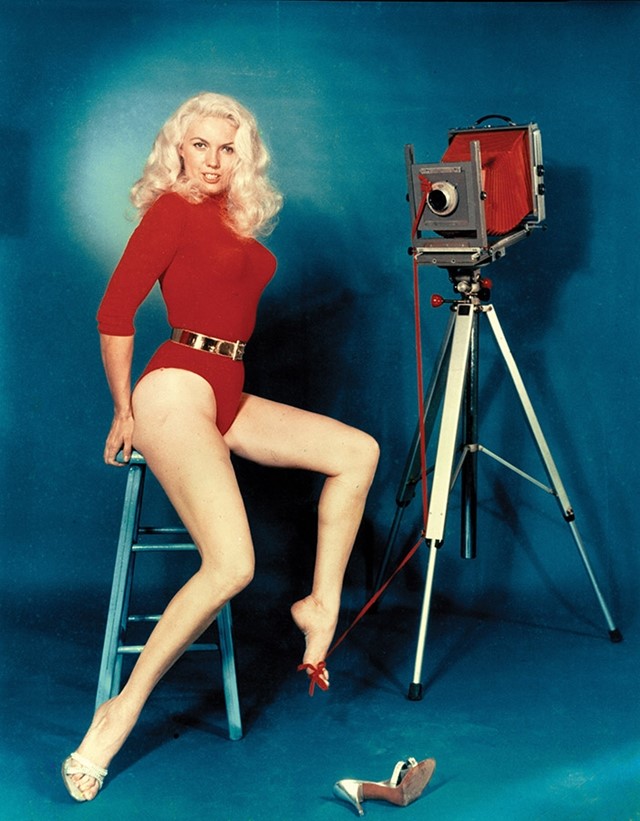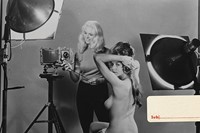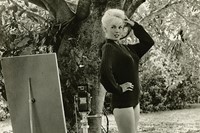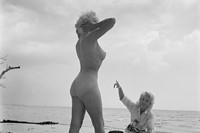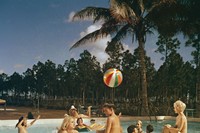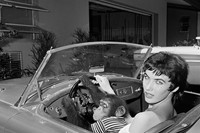Following the sad news of her death on Sunday, we look back at the pioneering work of Bunny Yeager, the woman who created the classiest cheesecake shots of her era
The pneumatic curves of a smiling pin-up girl are one of the definitive visual legacies of the 1950s, along with the emergence of rock’n’roll and the rise of the Beatniks. Yet behind every photo of a coquettishly smiling blonde, you would generally find a male photographer packing up his case. Not so with Bunny Yeager, the model-turned-camerawoman who crafted her trade by flipping the lens upon herself, as well as creating some of the most iconic cheesecake shots of the era. In celebration of the unique place she held in the industry, Rizzoli have published a book, Bunny Yeager’s Darkroom, dedicated to her stunning images, which run alongside her detailed and generous advice to young aspiring photographers.
"She was responsible for the photo that launched a thousand white bikinis...Ursula Andress emerging from the sea on the set of Dr. No"
Yeager’s formula was a winning one, certainly in the sunshine world of Miami Beach. In an industry dominated by men, she stood out, a young woman with model looks, taking photos of other beautiful girls in little or no clothes. She rapidly made a name for herself, gaining global renown in 1954 with shots of the then little-known Bettie Page in just a Santa hat; photos that were later sold as a centrefold spread to nascent publication Playboy. In 1962, she was responsible for the photo that launched a thousand white bikinis, taking the stills of Ursula Andress emerging from the sea on the set of Dr. No. The 60s also saw her marriage, and the first of many self-portraits that she took at home, partly for her own pleasure and entertainment, and also as research for the many works she penned advising how best to photograph nudes.
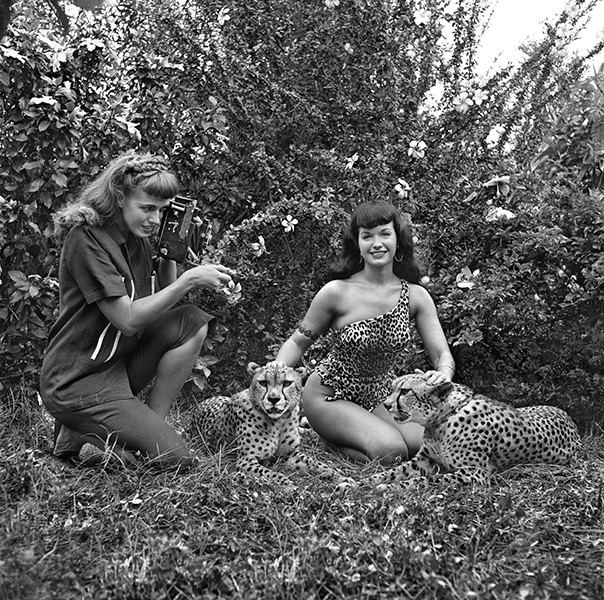
But in an era where the pin-up was ubiquitous, what was it that made Bunny’s work special? The answer surely lies in her inherent understanding of how to create a great image, understanding bred from having done the job herself. Her models are patently enjoying themselves, and there is an absence of the lasciviousness that can so often mar the genre. Even when shooting the stuff of puerile schoolboy fantasy – a group of college girls cleaning a fire engine, a female-dominated nudist colony – the feel remains sunny Americana rather than cheap or tawdry. Her models are athletic, with a balletic grace, and their shots exude confidence and self-possession, whether posing with Sammy Davis Jr. on the beach, draped only in a fishing net or posing, à la Bettie, with a pair of baby leopards. In her own way, Yeager was a feminist visionary, sculpting a path that allowed women to enjoy being liberated in front of the camera, celebrating the female form, and expecting them to enjoy the results just as much as men.
Bunny Yeager's Darkroom is out now, published by Rizzoli.
